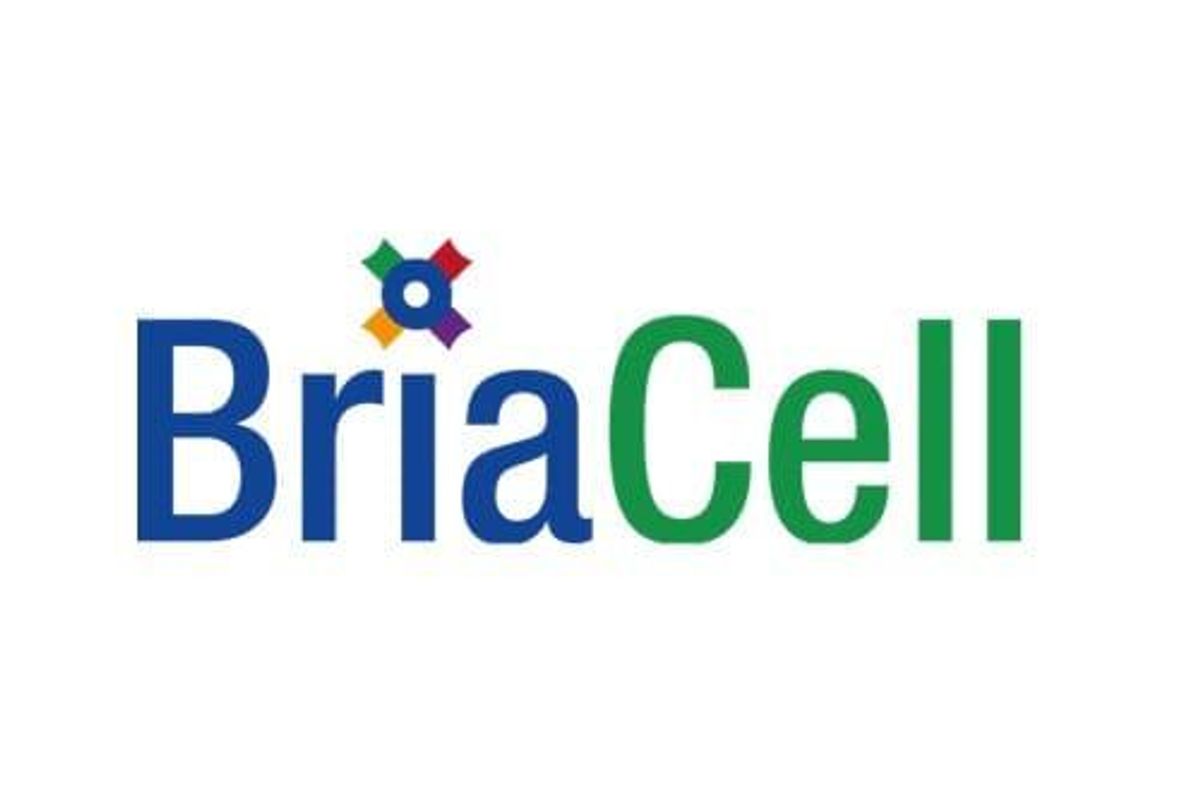KEYTRUDA is approved for the treatment of adult and pediatric patients with unresectable or metastatic MSI-H or dMMR solid tumors, as determined by an FDA-approved test, that have progressed following prior treatment and who have no satisfactory alternative treatment options
Merck (NYSE: MRK), known as MSD outside of the United States and Canada, today announced that the U.S. Food and Drug Administration (FDA) has granted full approval to KEYTRUDA, Merck's anti-PD-1 therapy, for the treatment of adult and pediatric patients with unresectable or metastatic microsatellite instability-high (MSI-H) or mismatch repair deficient (dMMR) solid tumors, as determined by an FDA-approved test, that have progressed following prior treatment and who have no satisfactory alternative treatment options. The conversion from an accelerated to a full (regular) approval is based on results from the Phase 2 KEYNOTE-158, KEYNOTE-164 and KEYNOTE-051 trials and includes data in 504 adult and pediatric patients across more than 30 types of cancer. This marks the first full approval for an immunotherapy based on a predictive biomarker, regardless of solid tumor type.
"This approval reinforces the important role of KEYTRUDA in certain patients with MSI-H or dMMR solid tumors facing a variety of cancers," said Dr. Luis A. Diaz, Jr., head of the Division of Solid Tumor Oncology, Memorial Sloan Kettering Cancer Center. "These data also further underscore the need for biomarker testing to identify patients who may be eligible for this therapy."
Immune-mediated adverse reactions, which may be severe or fatal, can occur in any organ system or tissue and can affect more than one body system simultaneously. Immune-mediated adverse reactions can occur at any time during or after treatment with KEYTRUDA, including pneumonitis, colitis, hepatitis, endocrinopathies, nephritis, dermatologic reactions, solid organ transplant rejection, and complications of allogeneic hematopoietic stem cell transplantation. Important immune-mediated adverse reactions listed here may not include all possible severe and fatal immune-mediated adverse reactions. Early identification and management of immune- mediated adverse reactions are essential to ensure safe use of KEYTRUDA. Based on the severity of the adverse reaction, KEYTRUDA should be withheld or permanently discontinued and corticosteroids administered if appropriate. KEYTRUDA can also cause severe or life-threatening infusion-related reactions. Based on its mechanism of action, KEYTRUDA can cause fetal harm when administered to a pregnant woman. For more information, see "Selected Important Safety Information" below.
"Today's approval builds on the 2017 accelerated approval of KEYTRUDA as the first immunotherapy with a tumor agnostic indication and supports the role of KEYTRUDA as an effective immunotherapy option based on a pan-tumor predictive biomarker," said Dr. Scot Ebbinghaus, vice president, global clinical development, Merck Research Laboratories. "This milestone reflects Merck's longstanding commitment to biomarker research and personalizing treatment strategies for patients."
Data supporting the approval
The full approval was based on data from three multicenter, non-randomized, open-label multi-cohort trials. KEYNOTE-164 ( NCT02460198 ) enrolled 124 patients with advanced MSI-H/dMMR colorectal cancer that progressed following treatment with fluoropyrimidine and either oxaliplatin or irinotecan with or without anti-VEGF/EGFR mAb-based therapy. KEYNOTE-158 ( NCT02628067 ) enrolled 373 patients with advanced MSI-H/dMMR non-colorectal cancers who had disease progression following prior therapy. Patients were either prospectively enrolled with MSI-H/dMMR tumors (Cohort K) or retrospectively identified in one of 10 solid tumor cohorts (Cohorts A-J). KEYNOTE-051 ( NCT02332668 ) enrolled seven pediatric patients with MSI-H/dMMR cancers. All trials excluded patients with autoimmune disease or a medical condition that required immunosuppression. Regardless of histology, MSI or MMR tumor status was determined using polymerase chain reaction (local or central) or immunohistochemistry (local or central), respectively.
Adult patients received KEYTRUDA 200 mg administered intravenously every three weeks (pediatric patients received 2 mg/kg every three weeks) until unacceptable toxicity, disease progression or a maximum of 24 months. In KEYNOTE‑164 and KEYNOTE‑158, assessment of tumor status was performed every nine weeks through the first year, then every 12 weeks thereafter. In KEYNOTE‑051, assessment of tumor status was performed every eight weeks for 24 weeks, and then every 12 weeks thereafter. The major efficacy outcome measures were objective response rate (ORR) and duration of response (DOR) as assessed by blinded independent central review according to RECIST v1.1 (modified to follow a maximum of 10 target lesions and a maximum of five target lesions per organ in KEYNOTE-158) and as assessed by the investigator according to RECIST v1.1 in KEYNOTE-051.
In a pooled analysis of the three trials, KEYTRUDA demonstrated an ORR of 33.3% (95% CI, 29.2-37.6), including a complete response rate of 10.3% and partial response rate of 23.0% at a median follow-up time of 20.1 months (range, 0.1 to 71.4 months). Of the responding patients (n=168), 77% had responses lasting 12 months or longer, and 39% had responses lasting 36 months or longer. Median DOR was 63.2 months (range, 1.9+ to 63.9+ months).
In patients with MSI-H/dMMR colorectal cancer (n=124), KEYTRUDA demonstrated an ORR of 34% (95% CI, 26%-43%) with a DOR ranging from 4.4 to 58.5+ months. In patients with other MSI-H/dMMR non-colorectal solid tumors (n=380), which included endometrial cancer, gastric or gastroesophageal junction cancer, small intestinal cancer, brain cancer, ovarian cancer, biliary cancer, pancreatic cancer, sarcoma, breast cancer, cervical cancer, neuroendocrine cancer, prostate cancer, adrenocortical cancer, mesothelioma, thyroid cancer, small cell lung cancer, bladder cancer, salivary cancer, renal cell cancer and other cancers (including anal cancer, head and neck squamous cell cancer, nasopharyngeal cancer, retroperitoneal cancer, testicular cancer, vaginal cancer, vulvar cancer, appendiceal adenocarcinoma, hepatocellular carcinoma, carcinoma not-otherwise-specified and carcinoma of unknown origin), KEYTRUDA demonstrated an overall ORR of 33% (95% CI: 28%-38%) with a duration of response ranging from 1.9+ to 63.9+ months.
In KEYNOTE-158 and KEYNOTE-164, the median duration of exposure to KEYTRUDA was 6.2 months (range, 1 day to 53.5 months). In KEYNOTE-051, the median duration of exposure was 2.1 months (range: 1 day to 25 months).
About Microsatellite Instability-High (MSI-H) and Deficient Mismatch Repair (dMMR)
Microsatellite instability (MSI) and dMMR are biomarkers that have been identified in many different types of cancer and that can be hereditary or random. MSI is a change that occurs in the DNA of certain cells, such as cancer cells, in which the number of repeated DNA bases in a microsatellite (which is a short, repeated sequence of DNA) is different from what it was when the microsatellite was inherited. dMMR describes cells that have mutations in certain genes involved in correcting mistakes made when DNA is copied into a cell when dividing. MSI-H and dMMR can occur when a cell is unable to repair mistakes during that division process.
About KEYTRUDA ® (pembrolizumab) injection, 100 mg
KEYTRUDA is an anti-programmed death receptor-1 (PD-1) therapy that works by increasing the ability of the body's immune system to help detect and fight tumor cells. KEYTRUDA is a humanized monoclonal antibody that blocks the interaction between PD-1 and its ligands, PD- L1 and PD-L2, thereby activating T lymphocytes which may affect both tumor cells and healthy cells.
Merck has the industry's largest immuno-oncology clinical research program. There are currently more than 1,600 trials studying KEYTRUDA across a wide variety of cancers and treatment settings. The KEYTRUDA clinical program seeks to understand the role of KEYTRUDA across cancers and the factors that may predict a patient's likelihood of benefitting from treatment with KEYTRUDA, including exploring several different biomarkers.
Selected KEYTRUDA ® (pembrolizumab) Indications in the U.S.
Melanoma
KEYTRUDA is indicated for the treatment of patients with unresectable or metastatic melanoma.
KEYTRUDA is indicated for the adjuvant treatment of adult and pediatric (12 years and older) patients with stage IIB, IIC, or III melanoma following complete resection.
Non-Small Cell Lung Cancer
KEYTRUDA, in combination with pemetrexed and platinum chemotherapy, is indicated for the first-line treatment of patients with metastatic nonsquamous non-small cell lung cancer (NSCLC), with no EGFR or ALK genomic tumor aberrations.
KEYTRUDA, in combination with carboplatin and either paclitaxel or paclitaxel protein-bound, is indicated for the first-line treatment of patients with metastatic squamous NSCLC.
KEYTRUDA, as a single agent, is indicated for the first-line treatment of patients with NSCLC expressing PD-L1 [tumor proportion score (TPS) ≥1%] as determined by an FDA-approved test, with no EGFR or ALK genomic tumor aberrations, and is:
- stage III where patients are not candidates for surgical resection or definitive chemoradiation, or
- metastatic.
KEYTRUDA, as a single agent, is indicated for the treatment of patients with metastatic NSCLC whose tumors express PD-L1 (TPS ≥1%) as determined by an FDA-approved test, with disease progression on or after platinum-containing chemotherapy. Patients with EGFR or ALK genomic tumor aberrations should have disease progression on FDA-approved therapy for these aberrations prior to receiving KEYTRUDA.
KEYTRUDA, as a single agent, is indicated as adjuvant treatment following resection and platinum-based chemotherapy for adult patients with Stage IB (T2a ≥4 cm), II, or IIIA NSCLC.
Head and Neck Squamous Cell Cancer
KEYTRUDA, in combination with platinum and fluorouracil (FU), is indicated for the first-line treatment of patients with metastatic or with unresectable, recurrent head and neck squamous cell carcinoma (HNSCC).
KEYTRUDA, as a single agent, is indicated for the first-line treatment of patients with metastatic or with unresectable, recurrent HNSCC whose tumors express PD-L1 [Combined Positive Score (CPS) ≥1] as determined by an FDA-approved test.
KEYTRUDA, as a single agent, is indicated for the treatment of patients with recurrent or metastatic HNSCC with disease progression on or after platinum-containing chemotherapy.
Classical Hodgkin Lymphoma
KEYTRUDA is indicated for the treatment of adult patients with relapsed or refractory classical Hodgkin lymphoma (cHL).
KEYTRUDA is indicated for the treatment of pediatric patients with refractory cHL, or cHL that has relapsed after 2 or more lines of therapy.
Primary Mediastinal Large B-Cell Lymphoma
KEYTRUDA is indicated for the treatment of adult and pediatric patients with refractory primary mediastinal large B-cell lymphoma (PMBCL), or who have relapsed after 2 or more prior lines of therapy.
KEYTRUDA is not recommended for treatment of patients with PMBCL who require urgent cytoreductive therapy.
Urothelial Carcinoma
KEYTRUDA is indicated for the treatment of patients with locally advanced or metastatic urothelial carcinoma (mUC):
- who are not eligible for any platinum-containing chemotherapy, or
- who have disease progression during or following platinum-containing chemotherapy or within 12 months of neoadjuvant or adjuvant treatment with platinum-containing chemotherapy.
KEYTRUDA is indicated for the treatment of patients with Bacillus Calmette-Guerin-unresponsive, high-risk, non-muscle invasive bladder cancer (NMIBC) with carcinoma in situ with or without papillary tumors who are ineligible for or have elected not to undergo cystectomy.
Microsatellite Instability-High or Mismatch Repair Deficient Cancer
KEYTRUDA is indicated for the treatment of adult and pediatric patients with unresectable or metastatic MSI-H or dMMR solid tumors, as determined by an FDA-approved test, that have progressed following prior treatment and who have no satisfactory alternative treatment options.
Microsatellite Instability-High or Mismatch Repair Deficient Colorectal Cancer
KEYTRUDA is indicated for the treatment of patients with unresectable or metastatic MSI-H or dMMR colorectal cancer (CRC) as determined by an FDA-approved test.
Gastric Cancer
KEYTRUDA, in combination with trastuzumab, fluoropyrimidine- and platinum-containing chemotherapy, is indicated for the first-line treatment of patients with locally advanced unresectable or metastatic HER2-positive gastric or gastroesophageal junction (GEJ) adenocarcinoma.
This indication is approved under accelerated approval based on tumor response rate and durability of response. Continued approval for this indication may be contingent upon verification and description of clinical benefit in the confirmatory trials.
Esophageal Cancer
KEYTRUDA is indicated for the treatment of patients with locally advanced or metastatic esophageal or gastroesophageal junction (GEJ) (tumors with epicenter 1 to 5 centimeters above the GEJ) carcinoma that is not amenable to surgical resection or definitive chemoradiation either:
- in combination with platinum- and fluoropyrimidine-based chemotherapy, or
- as a single agent after one or more prior lines of systemic therapy for patients with tumors of squamous cell histology that express PD-L1 (CPS ≥10) as determined by an FDA-approved test.
Cervical Cancer
KEYTRUDA, in combination with chemotherapy, with or without bevacizumab, is indicated for the treatment of patients with persistent, recurrent, or metastatic cervical cancer whose tumors express PD-L1 (CPS ≥1) as determined by an FDA-approved test.
KEYTRUDA, as a single agent, is indicated for the treatment of patients with recurrent or metastatic cervical cancer with disease progression on or after chemotherapy whose tumors express PD-L1 (CPS ≥1) as determined by an FDA-approved test.
Hepatocellular Carcinoma
KEYTRUDA is indicated for the treatment of patients with hepatocellular carcinoma (HCC) who have been previously treated with sorafenib. This indication is approved under accelerated approval based on tumor response rate and durability of response. Continued approval for this indication may be contingent upon verification and description of clinical benefit in the confirmatory trials.
Merkel Cell Carcinoma
KEYTRUDA is indicated for the treatment of adult and pediatric patients with recurrent locally advanced or metastatic Merkel cell carcinoma (MCC). This indication is approved under accelerated approval based on tumor response rate and durability of response. Continued approval for this indication may be contingent upon verification and description of clinical benefit in the confirmatory trials.
Renal Cell Carcinoma
KEYTRUDA, in combination with axitinib, is indicated for the first-line treatment of adult patients with advanced renal cell carcinoma (RCC).
KEYTRUDA is indicated for the adjuvant treatment of patients with RCC at intermediate-high or high risk of recurrence following nephrectomy, or following nephrectomy and resection of metastatic lesions.
Endometrial Carcinoma
KEYTRUDA, as a single agent, is indicated for the treatment of patients with advanced endometrial carcinoma that is MSI-H or dMMR, as determined by an FDA-approved test, who have disease progression following prior systemic therapy in any setting and are not candidates for curative surgery or radiation.
Tumor Mutational Burden-High Cancer
KEYTRUDA is indicated for the treatment of adult and pediatric patients with unresectable or metastatic tumor mutational burden-high (TMB-H) [≥10 mutations/megabase] solid tumors, as determined by an FDA-approved test, that have progressed following prior treatment and who have no satisfactory alternative treatment options. This indication is approved under accelerated approval based on tumor response rate and durability of response. Continued approval for this indication may be contingent upon verification and description of clinical benefit in the confirmatory trials. The safety and effectiveness of KEYTRUDA in pediatric patients with TMB-H central nervous system cancers have not been established.
Cutaneous Squamous Cell Carcinoma
KEYTRUDA is indicated for the treatment of patients with recurrent or metastatic cutaneous squamous cell carcinoma (cSCC) or locally advanced cSCC that is not curable by surgery or radiation.
Triple-Negative Breast Cancer
KEYTRUDA is indicated for the treatment of patients with high-risk early-stage triple-negative breast cancer (TNBC) in combination with chemotherapy as neoadjuvant treatment, and then continued as a single agent as adjuvant treatment after surgery.
KEYTRUDA, in combination with chemotherapy, is indicated for the treatment of patients with locally recurrent unresectable or metastatic TNBC whose tumors express PD-L1 (CPS ≥10) as determined by an FDA-approved test.
Selected Important Safety Information for KEYTRUDA
Severe and Fatal Immune-Mediated Adverse Reactions
KEYTRUDA is a monoclonal antibody that belongs to a class of drugs that bind to either the PD-1 or the PD-L1, blocking the PD-1/PD-L1 pathway, thereby removing inhibition of the immune response, potentially breaking peripheral tolerance and inducing immune-mediated adverse reactions. Immune-mediated adverse reactions, which may be severe or fatal, can occur in any organ system or tissue, can affect more than one body system simultaneously, and can occur at any time after starting treatment or after discontinuation of treatment. Important immune-mediated adverse reactions listed here may not include all possible severe and fatal immune-mediated adverse reactions.
Monitor patients closely for symptoms and signs that may be clinical manifestations of underlying immune-mediated adverse reactions. Early identification and management are essential to ensure safe use of anti–PD-1/PD-L1 treatments. Evaluate liver enzymes, creatinine, and thyroid function at baseline and periodically during treatment. For patients with TNBC treated with KEYTRUDA in the neoadjuvant setting, monitor blood cortisol at baseline, prior to surgery, and as clinically indicated. In cases of suspected immune-mediated adverse reactions, initiate appropriate workup to exclude alternative etiologies, including infection. Institute medical management promptly, including specialty consultation as appropriate.
Withhold or permanently discontinue KEYTRUDA depending on severity of the immune-mediated adverse reaction. In general, if KEYTRUDA requires interruption or discontinuation, administer systemic corticosteroid therapy (1 to 2 mg/kg/day prednisone or equivalent) until improvement to Grade 1 or less. Upon improvement to Grade 1 or less, initiate corticosteroid taper and continue to taper over at least 1 month. Consider administration of other systemic immunosuppressants in patients whose adverse reactions are not controlled with corticosteroid therapy.
Immune-Mediated Pneumonitis
KEYTRUDA can cause immune-mediated pneumonitis. The incidence is higher in patients who have received prior thoracic radiation. Immune-mediated pneumonitis occurred in 3.4% (94/2799) of patients receiving KEYTRUDA, including fatal (0.1%), Grade 4 (0.3%), Grade 3 (0.9%), and Grade 2 (1.3%) reactions. Systemic corticosteroids were required in 67% (63/94) of patients. Pneumonitis led to permanent discontinuation of KEYTRUDA in 1.3% (36) and withholding in 0.9% (26) of patients. All patients who were withheld reinitiated KEYTRUDA after symptom improvement; of these, 23% had recurrence. Pneumonitis resolved in 59% of the 94 patients.
Pneumonitis occurred in 8% (31/389) of adult patients with cHL receiving KEYTRUDA as a single agent, including Grades 3-4 in 2.3% of patients. Patients received high-dose corticosteroids for a median duration of 10 days (range: 2 days to 53 months). Pneumonitis rates were similar in patients with and without prior thoracic radiation. Pneumonitis led to discontinuation of KEYTRUDA in 5.4% (21) of patients. Of the patients who developed pneumonitis, 42% interrupted KEYTRUDA, 68% discontinued KEYTRUDA, and 77% had resolution.
Pneumonitis occurred in 7% (41/580) of adult patients with resected NSCLC who received KEYTRUDA as a single agent for adjuvant treatment of NSCLC, including fatal (0.2%), Grade 4 (0.3%), and Grade 3 (1%) adverse reactions. Patients received high-dose corticosteroids for a median duration of 10 days (range: 1 day to 2.3 months). Pneumonitis led to discontinuation of KEYTRUDA in 26 (4.5%) of patients. Of the patients who developed pneumonitis, 54% interrupted KEYTRUDA, 63% discontinued KEYTRUDA, and 71% had resolution.
Immune-Mediated Colitis
KEYTRUDA can cause immune-mediated colitis, which may present with diarrhea. Cytomegalovirus infection/reactivation has been reported in patients with corticosteroid-refractory immune-mediated colitis. In cases of corticosteroid-refractory colitis, consider repeating infectious workup to exclude alternative etiologies. Immune-mediated colitis occurred in 1.7% (48/2799) of patients receiving KEYTRUDA, including Grade 4 (
Hepatotoxicity and Immune-Mediated Hepatitis
KEYTRUDA as a Single Agent
KEYTRUDA can cause immune-mediated hepatitis. Immune-mediated hepatitis occurred in 0.7% (19/2799) of patients receiving KEYTRUDA, including Grade 4 (
KEYTRUDA With Axitinib
KEYTRUDA in combination with axitinib can cause hepatic toxicity. Monitor liver enzymes before initiation of and periodically throughout treatment. Consider monitoring more frequently as compared to when the drugs are administered as single agents. For elevated liver enzymes, interrupt KEYTRUDA and axitinib, and consider administering corticosteroids as needed. With the combination of KEYTRUDA and axitinib, Grades 3 and 4 increased alanine aminotransferase (ALT) (20%) and increased aspartate aminotransferase (AST) (13%) were seen at a higher frequency compared to KEYTRUDA alone. Fifty-nine percent of the patients with increased ALT received systemic corticosteroids. In patients with ALT ≥3 times upper limit of normal (ULN) (Grades 2-4, n=116), ALT resolved to Grades 0-1 in 94%. Among the 92 patients who were rechallenged with either KEYTRUDA (n=3) or axitinib (n=34) administered as a single agent or with both (n=55), recurrence of ALT ≥3 times ULN was observed in 1 patient receiving KEYTRUDA, 16 patients receiving axitinib, and 24 patients receiving both. All patients with a recurrence of ALT ≥3 ULN subsequently recovered from the event.
Immune-Mediated Endocrinopathies
Adrenal Insufficiency
KEYTRUDA can cause primary or secondary adrenal insufficiency. For Grade 2 or higher, initiate symptomatic treatment, including hormone replacement as clinically indicated. Withhold KEYTRUDA depending on severity. Adrenal insufficiency occurred in 0.8% (22/2799) of patients receiving KEYTRUDA, including Grade 4 (
Hypophysitis
KEYTRUDA can cause immune-mediated hypophysitis. Hypophysitis can present with acute symptoms associated with mass effect such as headache, photophobia, or visual field defects. Hypophysitis can cause hypopituitarism. Initiate hormone replacement as indicated. Withhold or permanently discontinue KEYTRUDA depending on severity. Hypophysitis occurred in 0.6% (17/2799) of patients receiving KEYTRUDA, including Grade 4 (
Thyroid Disorders
KEYTRUDA can cause immune-mediated thyroid disorders. Thyroiditis can present with or without endocrinopathy. Hypothyroidism can follow hyperthyroidism. Initiate hormone replacement for hypothyroidism or institute medical management of hyperthyroidism as clinically indicated. Withhold or permanently discontinue KEYTRUDA depending on severity. Thyroiditis occurred in 0.6% (16/2799) of patients receiving KEYTRUDA, including Grade 2 (0.3%). None discontinued, but KEYTRUDA was withheld in
Hyperthyroidism occurred in 3.4% (96/2799) of patients receiving KEYTRUDA, including Grade 3 (0.1%) and Grade 2 (0.8%). It led to permanent discontinuation of KEYTRUDA in
Type 1 Diabetes Mellitus (DM), Which Can Present With Diabetic Ketoacidosis
Monitor patients for hyperglycemia or other signs and symptoms of diabetes. Initiate treatment with insulin as clinically indicated. Withhold KEYTRUDA depending on severity. Type 1 DM occurred in 0.2% (6/2799) of patients receiving KEYTRUDA. It led to permanent discontinuation in
Immune-Mediated Nephritis With Renal Dysfunction
KEYTRUDA can cause immune-mediated nephritis. Immune-mediated nephritis occurred in 0.3% (9/2799) of patients receiving KEYTRUDA, including Grade 4 (
Immune-Mediated Dermatologic Adverse Reactions
KEYTRUDA can cause immune-mediated rash or dermatitis. Exfoliative dermatitis, including Stevens-Johnson syndrome, drug rash with eosinophilia and systemic symptoms, and toxic epidermal necrolysis, has occurred with anti–PD-1/PD-L1 treatments. Topical emollients and/or topical corticosteroids may be adequate to treat mild to moderate nonexfoliative rashes. Withhold or permanently discontinue KEYTRUDA depending on severity. Immune-mediated dermatologic adverse reactions occurred in 1.4% (38/2799) of patients receiving KEYTRUDA, including Grade 3 (1%) and Grade 2 (0.1%) reactions. Systemic corticosteroids were required in 40% (15/38) of patients. These reactions led to permanent discontinuation in 0.1% (2) and withholding of KEYTRUDA in 0.6% (16) of patients. All patients who were withheld reinitiated KEYTRUDA after symptom improvement; of these, 6% had recurrence. The reactions resolved in 79% of the 38 patients.
Other Immune-Mediated Adverse Reactions
The following clinically significant immune-mediated adverse reactions occurred at an incidence of Cardiac/Vascular: Myocarditis, pericarditis, vasculitis; Nervous System: Meningitis, encephalitis, myelitis and demyelination, myasthenic syndrome/myasthenia gravis (including exacerbation), Guillain-Barré syndrome, nerve paresis, autoimmune neuropathy; Ocular: Uveitis, iritis and other ocular inflammatory toxicities can occur. Some cases can be associated with retinal detachment. Various grades of visual impairment, including blindness, can occur. If uveitis occurs in combination with other immune-mediated adverse reactions, consider a Vogt-Koyanagi-Harada-like syndrome, as this may require treatment with systemic steroids to reduce the risk of permanent vision loss; Gastrointestinal: Pancreatitis, to include increases in serum amylase and lipase levels, gastritis, duodenitis; Musculoskeletal and Connective Tissue: Myositis/polymyositis, rhabdomyolysis (and associated sequelae, including renal failure), arthritis (1.5%), polymyalgia rheumatica; Endocrine: Hypoparathyroidism; Hematologic/Immune: Hemolytic anemia, aplastic anemia, hemophagocytic lymphohistiocytosis, systemic inflammatory response syndrome, histiocytic necrotizing lymphadenitis (Kikuchi lymphadenitis), sarcoidosis, immune thrombocytopenic purpura, solid organ transplant rejection.
Infusion-Related Reactions
KEYTRUDA can cause severe or life-threatening infusion-related reactions, including hypersensitivity and anaphylaxis, which have been reported in 0.2% of 2799 patients receiving KEYTRUDA. Monitor for signs and symptoms of infusion-related reactions. Interrupt or slow the rate of infusion for Grade 1 or Grade 2 reactions. For Grade 3 or Grade 4 reactions, stop infusion and permanently discontinue KEYTRUDA.
Complications of Allogeneic Hematopoietic Stem Cell Transplantation (HSCT)
Fatal and other serious complications can occur in patients who receive allogeneic HSCT before or after anti–PD-1/PD-L1 treatments. Transplant-related complications include hyperacute graft-versus-host disease (GVHD), acute and chronic GVHD, hepatic veno-occlusive disease after reduced intensity conditioning, and steroid-requiring febrile syndrome (without an identified infectious cause). These complications may occur despite intervening therapy between anti–PD-1/PD-L1 treatment and allogeneic HSCT. Follow patients closely for evidence of these complications and intervene promptly. Consider the benefit vs risks of using anti–PD-1/PD-L1 treatments prior to or after an allogeneic HSCT.
Increased Mortality in Patients With Multiple Myeloma
In trials in patients with multiple myeloma, the addition of KEYTRUDA to a thalidomide analogue plus dexamethasone resulted in increased mortality. Treatment of these patients with an anti–PD-1/PD-L1 treatment in this combination is not recommended outside of controlled trials.
Embryofetal Toxicity
Based on its mechanism of action, KEYTRUDA can cause fetal harm when administered to a pregnant woman. Advise women of this potential risk. In females of reproductive potential, verify pregnancy status prior to initiating KEYTRUDA and advise them to use effective contraception during treatment and for 4 months after the last dose.
Adverse Reactions
In KEYNOTE-006, KEYTRUDA was discontinued due to adverse reactions in 9% of 555 patients with advanced melanoma; adverse reactions leading to permanent discontinuation in more than one patient were colitis (1.4%), autoimmune hepatitis (0.7%), allergic reaction (0.4%), polyneuropathy (0.4%), and cardiac failure (0.4%). The most common adverse reactions (≥20%) with KEYTRUDA were fatigue (28%), diarrhea (26%), rash (24%), and nausea (21%).
In KEYNOTE-054, when KEYTRUDA was administered as a single agent to patients with stage III melanoma, KEYTRUDA was permanently discontinued due to adverse reactions in 14% of 509 patients; the most common (≥1%) were pneumonitis (1.4%), colitis (1.2%), and diarrhea (1%). Serious adverse reactions occurred in 25% of patients receiving KEYTRUDA. The most common adverse reaction (≥20%) with KEYTRUDA was diarrhea (28%). In KEYNOTE-716, when KEYTRUDA was administered as a single agent to patients with stage IIB or IIC melanoma, adverse reactions occurring in patients with stage IIB or IIC melanoma were similar to those occurring in 1011 patients with stage III melanoma from KEYNOTE-054.
In KEYNOTE-189, when KEYTRUDA was administered with pemetrexed and platinum chemotherapy in metastatic nonsquamous NSCLC, KEYTRUDA was discontinued due to adverse reactions in 20% of 405 patients. The most common adverse reactions resulting in permanent discontinuation of KEYTRUDA were pneumonitis (3%) and acute kidney injury (2%). The most common adverse reactions (≥20%) with KEYTRUDA were nausea (56%), fatigue (56%), constipation (35%), diarrhea (31%), decreased appetite (28%), rash (25%), vomiting (24%), cough (21%), dyspnea (21%), and pyrexia (20%).
In KEYNOTE-407, when KEYTRUDA was administered with carboplatin and either paclitaxel or paclitaxel protein-bound in metastatic squamous NSCLC, KEYTRUDA was discontinued due to adverse reactions in 15% of 101 patients. The most frequent serious adverse reactions reported in at least 2% of patients were febrile neutropenia, pneumonia, and urinary tract infection. Adverse reactions observed in KEYNOTE-407 were similar to those observed in KEYNOTE-189 with the exception that increased incidences of alopecia (47% vs 36%) and peripheral neuropathy (31% vs 25%) were observed in the KEYTRUDA and chemotherapy arm compared to the placebo and chemotherapy arm in KEYNOTE-407.
In KEYNOTE-042, KEYTRUDA was discontinued due to adverse reactions in 19% of 636 patients with advanced NSCLC; the most common were pneumonitis (3%), death due to unknown cause (1.6%), and pneumonia (1.4%). The most frequent serious adverse reactions reported in at least 2% of patients were pneumonia (7%), pneumonitis (3.9%), pulmonary embolism (2.4%), and pleural effusion (2.2%). The most common adverse reaction (≥20%) was fatigue (25%).
In KEYNOTE-010, KEYTRUDA monotherapy was discontinued due to adverse reactions in 8% of 682 patients with metastatic NSCLC; the most common was pneumonitis (1.8%). The most common adverse reactions (≥20%) were decreased appetite (25%), fatigue (25%), dyspnea (23%), and nausea (20%).
Adverse reactions observed in KEYNOTE-091 were generally similar to those occurring in other patients with NSCLC receiving KEYTRUDA as a single agent, with the exception of hypothyroidism (22%), hyperthyroidism (11%), and pneumonitis (7%). Two fatal adverse reactions of myocarditis occurred.
In KEYNOTE-048, KEYTRUDA monotherapy was discontinued due to adverse events in 12% of 300 patients with HNSCC; the most common adverse reactions leading to permanent discontinuation were sepsis (1.7%) and pneumonia (1.3%). The most common adverse reactions (≥20%) were fatigue (33%), constipation (20%), and rash (20%).
In KEYNOTE-048, when KEYTRUDA was administered in combination with platinum (cisplatin or carboplatin) and FU chemotherapy, KEYTRUDA was discontinued due to adverse reactions in 16% of 276 patients with HNSCC. The most common adverse reactions resulting in permanent discontinuation of KEYTRUDA were pneumonia (2.5%), pneumonitis (1.8%), and septic shock (1.4%). The most common adverse reactions (≥20%) were nausea (51%), fatigue (49%), constipation (37%), vomiting (32%), mucosal inflammation (31%), diarrhea (29%), decreased appetite (29%), stomatitis (26%), and cough (22%).
In KEYNOTE-012, KEYTRUDA was discontinued due to adverse reactions in 17% of 192 patients with HNSCC. Serious adverse reactions occurred in 45% of patients. The most frequent serious adverse reactions reported in at least 2% of patients were pneumonia, dyspnea, confusional state, vomiting, pleural effusion, and respiratory failure. The most common adverse reactions (≥20%) were fatigue, decreased appetite, and dyspnea. Adverse reactions occurring in patients with HNSCC were generally similar to those occurring in patients with melanoma or NSCLC who received KEYTRUDA as a monotherapy, with the exception of increased incidences of facial edema and new or worsening hypothyroidism.
In KEYNOTE-204, KEYTRUDA was discontinued due to adverse reactions in 14% of 148 patients with cHL. Serious adverse reactions occurred in 30% of patients receiving KEYTRUDA; those ≥1% were pneumonitis, pneumonia, pyrexia, myocarditis, acute kidney injury, febrile neutropenia, and sepsis. Three patients died from causes other than disease progression: 2 from complications after allogeneic HSCT and 1 from unknown cause. The most common adverse reactions (≥20%) were upper respiratory tract infection (41%), musculoskeletal pain (32%), diarrhea (22%), and pyrexia, fatigue, rash, and cough (20% each).
In KEYNOTE-087, KEYTRUDA was discontinued due to adverse reactions in 5% of 210 patients with cHL. Serious adverse reactions occurred in 16% of patients; those ≥1% were pneumonia, pneumonitis, pyrexia, dyspnea, GVHD, and herpes zoster. Two patients died from causes other than disease progression: 1 from GVHD after subsequent allogeneic HSCT and 1 from septic shock. The most common adverse reactions (≥20%) were fatigue (26%), pyrexia (24%), cough (24%), musculoskeletal pain (21%), diarrhea (20%), and rash (20%).
In KEYNOTE-170, KEYTRUDA was discontinued due to adverse reactions in 8% of 53 patients with PMBCL. Serious adverse reactions occurred in 26% of patients and included arrhythmia (4%), cardiac tamponade (2%), myocardial infarction (2%), pericardial effusion (2%), and pericarditis (2%). Six (11%) patients died within 30 days of start of treatment. The most common adverse reactions (≥20%) were musculoskeletal pain (30%), upper respiratory tract infection and pyrexia (28% each), cough (26%), fatigue (23%), and dyspnea (21%).
In KEYNOTE-052, KEYTRUDA was discontinued due to adverse reactions in 11% of 370 patients with locally advanced or mUC. Serious adverse reactions occurred in 42% of patients; those ≥2% were urinary tract infection, hematuria, acute kidney injury, pneumonia, and urosepsis. The most common adverse reactions (≥20%) were fatigue (38%), musculoskeletal pain (24%), decreased appetite (22%), constipation (21%), rash (21%), and diarrhea (20%).
In KEYNOTE-045, KEYTRUDA was discontinued due to adverse reactions in 8% of 266 patients with locally advanced or mUC. The most common adverse reaction resulting in permanent discontinuation of KEYTRUDA was pneumonitis (1.9%). Serious adverse reactions occurred in 39% of KEYTRUDA-treated patients; those ≥2% were urinary tract infection, pneumonia, anemia, and pneumonitis. The most common adverse reactions (≥20%) in patients who received KEYTRUDA were fatigue (38%), musculoskeletal pain (32%), pruritus (23%), decreased appetite (21%), nausea (21%), and rash (20%).
In KEYNOTE-057, KEYTRUDA was discontinued due to adverse reactions in 11% of 148 patients with high-risk NMIBC. The most common adverse reaction resulting in permanent discontinuation of KEYTRUDA was pneumonitis (1.4%). Serious adverse reactions occurred in 28% of patients; those ≥2% were pneumonia (3%), cardiac ischemia (2%), colitis (2%), pulmonary embolism (2%), sepsis (2%), and urinary tract infection (2%). The most common adverse reactions (≥20%) were fatigue (29%), diarrhea (24%), and rash (24%).
Adverse reactions occurring in patients with MSI-H or dMMR CRC were similar to those occurring in patients with melanoma or NSCLC who received KEYTRUDA as a monotherapy.
In KEYNOTE-158 and KEYNOTE-164, adverse reactions occurring in patients with MSI-H or dMMR cancer were similar to those occurring in patients with other solid tumors who received KEYTRUDA as a single agent.
In KEYNOTE-811, when KEYTRUDA was administered in combination with trastuzumab, fluoropyrimidine- and platinum-containing chemotherapy, KEYTRUDA was discontinued due to adverse reactions in 6% of 217 patients with locally advanced unresectable or metastatic HER2+ gastric or GEJ adenocarcinoma. The most common adverse reaction resulting in permanent discontinuation was pneumonitis (1.4%). In the KEYTRUDA arm versus placebo, there was a difference of ≥5% incidence between patients treated with KEYTRUDA versus standard of care for diarrhea (53% vs 44%) and nausea (49% vs 44%).
The most common adverse reactions (reported in ≥20%) in patients receiving KEYTRUDA in combination with chemotherapy were fatigue/asthenia, nausea, constipation, diarrhea, decreased appetite, rash, vomiting, cough, dyspnea, pyrexia, alopecia, peripheral neuropathy, mucosal inflammation, stomatitis, headache, weight loss, abdominal pain, arthralgia, myalgia, and insomnia.
In KEYNOTE-590, when KEYTRUDA was administered with cisplatin and fluorouracil to patients with metastatic or locally advanced esophageal or GEJ (tumors with epicenter 1 to 5 centimeters above the GEJ) carcinoma who were not candidates for surgical resection or definitive chemoradiation, KEYTRUDA was discontinued due to adverse reactions in 15% of 370 patients. The most common adverse reactions resulting in permanent discontinuation of KEYTRUDA (≥1%) were pneumonitis (1.6%), acute kidney injury (1.1%), and pneumonia (1.1%). The most common adverse reactions (≥20%) with KEYTRUDA in combination with chemotherapy were nausea (67%), fatigue (57%), decreased appetite (44%), constipation (40%), diarrhea (36%), vomiting (34%), stomatitis (27%), and weight loss (24%).
Adverse reactions occurring in patients with esophageal cancer who received KEYTRUDA as a monotherapy were similar to those occurring in patients with melanoma or NSCLC who received KEYTRUDA as a monotherapy.
In KEYNOTE-826, when KEYTRUDA was administered in combination with paclitaxel and cisplatin or paclitaxel and carboplatin, with or without bevacizumab (n=307), to patients with persistent, recurrent, or first-line metastatic cervical cancer regardless of tumor PD-L1 expression who had not been treated with chemotherapy except when used concurrently as a radio-sensitizing agent, fatal adverse reactions occurred in 4.6% of patients, including 3 cases of hemorrhage, 2 cases each of sepsis and due to unknown causes, and 1 case each of acute myocardial infarction, autoimmune encephalitis, cardiac arrest, cerebrovascular accident, femur fracture with perioperative pulmonary embolus, intestinal perforation, and pelvic infection. Serious adverse reactions occurred in 50% of patients receiving KEYTRUDA in combination with chemotherapy with or without bevacizumab; those ≥3% were febrile neutropenia (6.8%), urinary tract infection (5.2%), anemia (4.6%), and acute kidney injury and sepsis (3.3% each).
KEYTRUDA was discontinued in 15% of patients due to adverse reactions. The most common adverse reaction resulting in permanent discontinuation (≥1%) was colitis (1%).
For patients treated with KEYTRUDA, chemotherapy, and bevacizumab (n=196), the most common adverse reactions (≥20%) were peripheral neuropathy (62%), alopecia (58%), anemia (55%), fatigue/asthenia (53%), nausea and neutropenia (41% each), diarrhea (39%), hypertension and thrombocytopenia (35% each), constipation and arthralgia (31% each), vomiting (30%), urinary tract infection (27%), rash (26%), leukopenia (24%), hypothyroidism (22%), and decreased appetite (21%).
For patients treated with KEYTRUDA in combination with chemotherapy with or without bevacizumab, the most common adverse reactions (≥20%) were peripheral neuropathy (58%), alopecia (56%), fatigue (47%), nausea (40%), diarrhea (36%), constipation (28%), arthralgia (27%), vomiting (26%), hypertension and urinary tract infection (24% each), and rash (22%).
In KEYNOTE-158, KEYTRUDA was discontinued due to adverse reactions in 8% of 98 patients with previously treated recurrent or metastatic cervical cancer. Serious adverse reactions occurred in 39% of patients receiving KEYTRUDA; the most frequent included anemia (7%), fistula, hemorrhage, and infections [except urinary tract infections] (4.1% each). The most common adverse reactions (≥20%) were fatigue (43%), musculoskeletal pain (27%), diarrhea (23%), pain and abdominal pain (22% each), and decreased appetite (21%).
Adverse reactions occurring in patients with HCC were generally similar to those in patients with melanoma or NSCLC who received KEYTRUDA as a monotherapy, with the exception of increased incidences of ascites (8% Grades 3-4) and immune-mediated hepatitis (2.9%). Laboratory abnormalities (Grades 3-4) that occurred at a higher incidence were elevated AST (20%), ALT (9%), and hyperbilirubinemia (10%).
Among the 50 patients with MCC enrolled in study KEYNOTE-017, adverse reactions occurring in patients with MCC were generally similar to those occurring in patients with melanoma or NSCLC who received KEYTRUDA as a monotherapy. Laboratory abnormalities (Grades 3-4) that occurred at a higher incidence were elevated AST (11%) and hyperglycemia (19%).
In KEYNOTE-426, when KEYTRUDA was administered in combination with axitinib, fatal adverse reactions occurred in 3.3% of 429 patients. Serious adverse reactions occurred in 40% of patients, the most frequent (≥1%) were hepatotoxicity (7%), diarrhea (4.2%), acute kidney injury (2.3%), dehydration (1%), and pneumonitis (1%). Permanent discontinuation due to an adverse reaction occurred in 31% of patients; KEYTRUDA only (13%), axitinib only (13%), and the combination (8%); the most common were hepatotoxicity (13%), diarrhea/colitis (1.9%), acute kidney injury (1.6%), and cerebrovascular accident (1.2%). The most common adverse reactions (≥20%) were diarrhea (56%), fatigue/asthenia (52%), hypertension (48%), hepatotoxicity (39%), hypothyroidism (35%), decreased appetite (30%), palmar-plantar erythrodysesthesia (28%), nausea (28%), stomatitis/mucosal inflammation (27%), dysphonia (25%), rash (25%), cough (21%), and constipation (21%).
In KEYNOTE-564, when KEYTRUDA was administered as a single agent for the adjuvant treatment of renal cell carcinoma, serious adverse reactions occurred in 20% of patients receiving KEYTRUDA; the serious adverse reactions (≥1%) were acute kidney injury, adrenal insufficiency, pneumonia, colitis, and diabetic ketoacidosis (1% each). Fatal adverse reactions occurred in 0.2% including 1 case of pneumonia. Discontinuation of KEYTRUDA due to adverse reactions occurred in 21% of 488 patients; the most common (≥1%) were increased ALT (1.6%), colitis (1%), and adrenal insufficiency (1%). The most common adverse reactions (≥20%) were musculoskeletal pain (41%), fatigue (40%), rash (30%), diarrhea (27%), pruritus (23%), and hypothyroidism (21%).
Adverse reactions occurring in patients with MSI-H or dMMR endometrial carcinoma who received KEYTRUDA as a single agent were similar to those occurring in patients with melanoma or NSCLC who received KEYTRUDA as a single agent.
Adverse reactions occurring in patients with TMB-H cancer were similar to those occurring in patients with other solid tumors who received KEYTRUDA as a single agent.
Adverse reactions occurring in patients with recurrent or metastatic cSCC or locally advanced cSCC were similar to those occurring in patients with melanoma or NSCLC who received KEYTRUDA as a monotherapy.
In KEYNOTE-522, when KEYTRUDA was administered with neoadjuvant chemotherapy (carboplatin and paclitaxel followed by doxorubicin or epirubicin and cyclophosphamide) followed by surgery and continued adjuvant treatment with KEYTRUDA as a single agent (n=778) to patients with newly diagnosed, previously untreated, high-risk early-stage TNBC, fatal adverse reactions occurred in 0.9% of patients, including 1 each of adrenal crisis, autoimmune encephalitis, hepatitis, pneumonia, pneumonitis, pulmonary embolism, and sepsis in association with multiple organ dysfunction syndrome and myocardial infarction. Serious adverse reactions occurred in 44% of patients receiving KEYTRUDA; those ≥2% were febrile neutropenia (15%), pyrexia (3.7%), anemia (2.6%), and neutropenia (2.2%). KEYTRUDA was discontinued in 20% of patients due to adverse reactions. The most common reactions (≥1%) resulting in permanent discontinuation were increased ALT (2.7%), increased AST (1.5%), and rash (1%). The most common adverse reactions (≥20%) in patients receiving KEYTRUDA were fatigue (70%), nausea (67%), alopecia (61%), rash (52%), constipation (42%), diarrhea and peripheral neuropathy (41% each), stomatitis (34%), vomiting (31%), headache (30%), arthralgia (29%), pyrexia (28%), cough (26%), abdominal pain (24%), decreased appetite (23%), insomnia (21%), and myalgia (20%).
In KEYNOTE-355, when KEYTRUDA and chemotherapy (paclitaxel, paclitaxel protein-bound, or gemcitabine and carboplatin) were administered to patients with locally recurrent unresectable or metastatic TNBC who had not been previously treated with chemotherapy in the metastatic setting (n=596), fatal adverse reactions occurred in 2.5% of patients, including cardio-respiratory arrest (0.7%) and septic shock (0.3%). Serious adverse reactions occurred in 30% of patients receiving KEYTRUDA in combination with chemotherapy; the serious reactions in ≥2% were pneumonia (2.9%), anemia (2.2%), and thrombocytopenia (2%). KEYTRUDA was discontinued in 11% of patients due to adverse reactions. The most common reactions resulting in permanent discontinuation (≥1%) were increased ALT (2.2%), increased AST (1.5%), and pneumonitis (1.2%). The most common adverse reactions (≥20%) in patients receiving KEYTRUDA in combination with chemotherapy were fatigue (48%), nausea (44%), alopecia (34%), diarrhea and constipation (28% each), vomiting and rash (26% each), cough (23%), decreased appetite (21%), and headache (20%).
Lactation
Because of the potential for serious adverse reactions in breastfed children, advise women not to breastfeed during treatment and for 4 months after the final dose.
Pediatric Use
In KEYNOTE-051, 173 pediatric patients (65 pediatric patients aged 6 months to younger than 12 years and 108 pediatric patients aged 12 years to 17 years) were administered KEYTRUDA 2 mg/kg every 3 weeks. The median duration of exposure was 2.1 months (range: 1 day to 25 months).
Adverse reactions that occurred at a ≥10% higher rate in pediatric patients when compared to adults were pyrexia (33%), leukopenia (31%), vomiting (30%), neutropenia (29%), headache (25%), abdominal pain (23%), thrombocytopenia (22%), anemia (17%), decreased lymphocyte count (13%), and decreased white blood cell count (11%).
About the Merck Access Program for KEYTRUDA
At Merck, we are committed to supporting accessibility to our cancer medicines. Merck provides multiple programs to help appropriate patients who are prescribed KEYTRUDA have access to our anti-PD-1 therapy. The Merck Access Program provides reimbursement support for patients receiving KEYTRUDA, including information to help with out-of-pocket costs and co-pay assistance for eligible patients. More information is available by calling 855-257-3932 or visiting https://www.merckaccessprogram-keytruda.com/ .
About Merck's Patient Support Program for KEYTRUDA
Merck is committed to helping provide patients and their caregivers support throughout their treatment with KEYTRUDA. The KEY+YOU Patient Support Program provides a range of resources and support. For further information and to sign up, eligible patients may call 85-KEYTRUDA (855- 398-7832) or visit www.keytruda.com .
Merck's focus on cancer
Our goal is to translate breakthrough science into innovative oncology medicines to help people with cancer worldwide. At Merck, the potential to bring new hope to people with cancer drives our purpose and supporting accessibility to our cancer medicines is our commitment. As part of our focus on cancer, Merck is committed to exploring the potential of immuno-oncology with one of the largest development programs in the industry across more than 30 tumor types. We also continue to strengthen our portfolio through strategic acquisitions and are prioritizing the development of several promising oncology candidates with the potential to improve the treatment of advanced cancers. For more information about our oncology clinical trials, visit www.merck.com/clinicaltrials .
About Merck
At Merck, known as MSD outside of the United States and Canada, we are unified around our purpose: We use the power of leading-edge science to save and improve lives around the world. For more than 130 years, we have brought hope to humanity through the development of important medicines and vaccines. We aspire to be the premier research-intensive biopharmaceutical company in the world – and today, we are at the forefront of research to deliver innovative health solutions that advance the prevention and treatment of diseases in people and animals. We foster a diverse and inclusive global workforce and operate responsibly every day to enable a safe, sustainable and healthy future for all people and communities. For more information, visit www.merck.com and connect with us on Twitter , Facebook , Instagram , YouTube and LinkedIn .
Forward-Looking Statement of Merck & Co., Inc., Rahway, N.J., USA
This news release of Merck & Co., Inc., Rahway, N.J., USA (the "company") includes "forward-looking statements" within the meaning of the safe harbor provisions of the U.S. Private Securities Litigation Reform Act of 1995. These statements are based upon the current beliefs and expectations of the company's management and are subject to significant risks and uncertainties. There can be no guarantees with respect to pipeline candidates that the candidates will receive the necessary regulatory approvals or that they will prove to be commercially successful. If underlying assumptions prove inaccurate or risks or uncertainties materialize, actual results may differ materially from those set forth in the forward-looking statements.
Risks and uncertainties include but are not limited to, general industry conditions and competition; general economic factors, including interest rate and currency exchange rate fluctuations; the impact of the global outbreak of novel coronavirus disease (COVID-19); the impact of pharmaceutical industry regulation and health care legislation in the United States and internationally; global trends toward health care cost containment; technological advances, new products and patents attained by competitors; challenges inherent in new product development, including obtaining regulatory approval; the company's ability to accurately predict future market conditions; manufacturing difficulties or delays; financial instability of international economies and sovereign risk; dependence on the effectiveness of the company's patents and other protections for innovative products; and the exposure to litigation, including patent litigation, and/or regulatory actions.
The company undertakes no obligation to publicly update any forward-looking statement, whether as a result of new information, future events or otherwise. Additional factors that could cause results to differ materially from those described in the forward-looking statements can be found in the company's Annual Report on Form 10-K for the year ended December 31, 2022 and the company's other filings with the Securities and Exchange Commission (SEC) available at the SEC's Internet site ( www.sec.gov ).
Please see Prescribing Information for KEYTRUDA (pembrolizumab) at https://www.merck.com/product/usa/pi_circulars/k/keytruda/keytruda_pi.pdf and Medication Guide for KEYTRUDA at https://www.merck.com/product/usa/pi_circulars/k/keytruda/keytruda_mg.pdf .
View source version on businesswire.com: https://www.businesswire.com/news/home/20230329005927/en/
Media Contacts:
Julie Cunningham
(617) 519-6264
John Infanti
(609) 500-4714
Investor Contacts:
Peter Dannenbaum
(908) 740-1037
Damini Chokshi
(908) 740-1807









